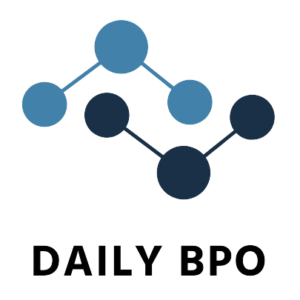Hiring Process
The cost of hiring a new employee, no matter if you are a cash-strapped business or a global corporation, is up to $4,129 per employee. Additionally, the lack of innovative skill sets within the workforce represents a huge challenge for organisations.
As technology evolves, it helps professionals from various fields do their jobs quicker and more efficiently. These technological changes also impact the way hiring is done.
HR talent is one of the most important drivers when it comes to business development. Still, no recruitment team has an unlimited budget or a time limit at its disposal to find the right person. To meet your recruitment needs, you need to know the most cost-effective techniques.
On its own, technology can’t solve the problems your HR team seeks to fix. Let’s suppose you’ve faced issues like faulty hiring processes or lack of necessary skill sets previously. In this scenario, you need to identify where you need to change with the availability of new technologies. This is where change management comes in.
Implementing employment policy measures
Knowledge, skill sets, and jobs you need to fill today may not be what you will need seven years from now. Furthermore, the professional growth of critical employees can affect your hiring activities – from long-term recruitment to succession planning.
Consequently, allow yourself time to understand your future plans and to create a recruitment plan that responds to market/industry trends as well as to your organizational needs. For instance, if you can spot positions that you expect to change regularly, develop a talent pipeline accordingly.
The management of change provides you with more control over the recruitment process. Here are six ways you can cut your online recruitment costs without risking the quality of your hires:
1. Benefit from employee involvement
Remember the last time you chose a place to eat out or go on holiday? You may have looked for reviews online or asked your closest family friend for recommendations. People looking for a job take the same approach and ask colleagues and friends to make an impression on a prospective employer.
Once you are confident that you are doing all the correct things to ensure employees feel happy, involved, and encouraged at work, encourage them to share their experiences on different platforms such as LinkedIn, Facebook, Twitter, Glassdoor, and so on.
Employee advocacy is an amazing tool that can help you get those professionals who are genuinely interested in joining your company. This will help you streamline the hiring process.
2. Optimise the CV screening process
Many tasks a recruiter is in charge of, include uploading job descriptions to multiple job sites and social media accounts, following up with those who have applied, arranging pre-hire interviews or assessments, and so on.
A job applicant tracking system (ATS), on the other hand, allows you to automate time-consuming tasks like screening hundreds of CVs.
SmartRecruiters, LinkedIn Recruiting, and Greenhouse -great tools for the hiring process that help you attribute a set of keywords – including qualifications, location, and years of experience – to each job position. By doing this, the system automatically sorts each job application to determine if it includes those keywords.
By simplifying the recruitment process, reducing duplicate data entry, and protecting candidate data with a robust ATS. Without the appropriate tools at your disposal, you’ll simply lose a lot of time doing tasks manually, which increases your hiring expenses.
3. Develop an employee referral system
Even though having a referral system requires you to set a budget aside to reward those members of staff who recommend an employee to you, it is a cost-effective option.
This is because it’s possible to recommend professionals who meet the job requirements and are closely aligned with your organisation’s work culture.
These employees are more likely to stay with you for the long term. Additionally, you need not spend a lot of time and resources on actively hiring people. It takes just 29 days to recruit a recommended applicant, according to Jobvite, compared to 55 days on average for other candidates.
A referral system avoids many of the steps usually taken during recruitment, such as screening CVs, posting ads on recruitment websites, and making cold calls. In the end, this will save you money.
4. Benefit from social media
The ability and willingness to communicate on social media allow companies to communicate about their daily activities, their mission, their vision, and the quality of their staff.
With this level of authenticity and transparency, you boost the number of applications from potential employees who are interested in joining and working for your business.
What’s more, social media is free. The only thing that you need is to invest a few minutes to put together the right messages and campaigns. Such companies as G2, Salesforce, and HubSpot regularly post photos and videos of their employees, emphasizing their company culture.
For starters, concentrate on only a few social media platforms. The most relevant platform for your hiring process requirements is LinkedIn, so build a solid strategy for it to make recruitment more effective.
5. Create talent pipelines and alumni networks
At times, you may have a tremendous volume of excellent applicants for a single position. While it is possible to choose just one, you can always create a talent pipeline. The idea is that you can approach them when a similar position opens up in the future.
The pre-qualification of applicants speeds up the recruitment process and makes it less expensive. As an applicant moves further through the recruitment process, the better you know them.
Equally, stay in touch with employees who leave your company, as they can be an important source of future applicants. Always encourage them to reapply, except if they have been fired, or recommend a friend or family member instead.
6. Make the recruitment funnel shorter
Get a quick idea of applicants by using video interviews. This approach works to standardize the interview process. It allows applicants and recruiters to talk to each other from the comfort of their own homes.
DaySchedule, Willo, and HireFlix are a few tools used for this task. Simply record video interviews and watch them offline at a convenient time. Screen the right applicants easily and cut down the money being spent on each candidate.
In a similar way, interviewing by phone can tell you a lot about a person and can take up to five minutes. Shorter interviews result in lower hiring costs.
On top of using the techniques listed above, also think about hiring in-house candidates who are potentially qualified and can benefit from a prospective development opportunity. Make a follow-up of employees who are interested in making vertical or horizontal career moves internally by scheduling regular assessments and one-on-one meetings with managers.
In turn, this will also help build a culture where your existing workforce feels heard and valued – a crucial element in reducing employee burnout. Keep defining benefits and advantages while focusing on your employees.
A higher insurance coverage, for example, may look expensive at first. At the same time, it can save money over the long term by retaining employees. Other cost-free options, such as flexible working hours and hybrid working models, can positively influence keeping employment costs down.
In conclusion
We can say that it is possible that not all of these techniques will work for you. So make sure you test a mix of these methods and tools to help you recruit cost-effectively. Remember that it takes time to discover the perfect strategy for your hiring process!
Would you like to discover more about outsourcing? Read our latest article: The Pros and Cons of Outsourcing



